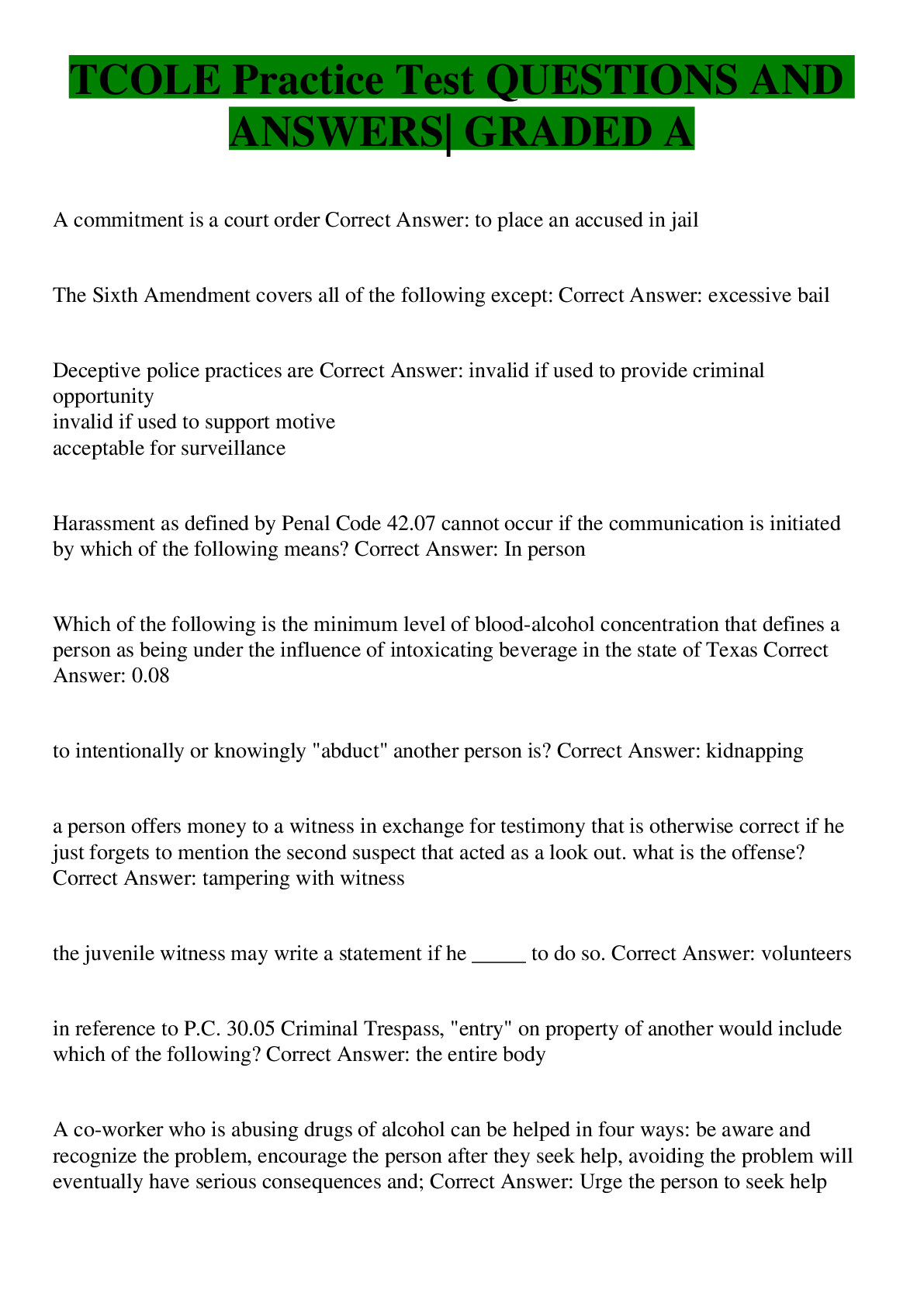Health Care > QUESTIONS & ANSWERS > AAFP - 63 PAGES Review of Board Review Questions AND ANSWERS| GRADED A+ (All)
AAFP - 63 PAGES Review of Board Review Questions AND ANSWERS| GRADED A+
Document Content and Description Below
AAFP - Review of Board Review Questions AND ANSWERS| GRADED A Absolute contraindications to electroconvulsive therapy (ECT) Correct Answer: There are no absolute contraindications to ECT Treatm... ent of community acquired pneumonia in infants and children Correct Answer: - Diagnosis of *community-acquired pneumonia* is mostly based on the history and physical examination - Pneumonia should be suspected in any child with *fever, cyanosis, and any abnormal respiratory finding* in the history or physical examination - Outpatient antibiotics are appropriate if the child *does not have a toxic appearance, hypoxemia, signs of respiratory distress, or dehydration* - *High-dose amoxicillin* is the drug of choice Current practice is to introduce solid foods into the diet at what age for normal term infants Correct Answer: 4-6 months of age as the extrusion reflex disappears by the age of 4 months Treatment of midshaft posteromedial tibial stress fractures Correct Answer: An air stirrup leg brace (Aircast) Most appropriate test to screen for late-onset male hypogonadism Correct Answer: Total testosterone Treatment of pediatric HSV-1 infection Correct Answer: Acyclovir suspension Most accurate maneuver for detecting an ACL tear Correct Answer: - Lachman test (sensitivity 60%-100%, mean 84%), - Anterior drawer test (sensitivity 9%-93%, mean 62%) - Pivot shift test (sensitivity 27%-95%, mean 62%) Diagnosis of multiple myeloma is based on Correct Answer: Evidence of myeloma-related end-organ impairment (hypercalcemia, renal failure, anemia, skeletal lesions) in the presence of M protein, monoclonal plasma cells, or both Findings are typical of femoral neuropathy Correct Answer: - History of weakness of the lower left leg, giving way of the knee, and discomfort in the anterior thigh - Femoral neuropathy is a mononeuropathy commonly associated with diabetes mellitus Women who use low-dose estrogen oral contraceptives have a 50% lower risk of cancer of the: Correct Answer: Ovary Clinical hallmarks of polymyalgia rheumatica Correct Answer: - Pain and stiffness in the shoulder and pelvic girdle - Dramatic response to corticosteroids 3 subtypes of frontotemporal dementia Correct Answer: - Behavioral variant - Semantic dementia - Progressive nonfluent aphasia Hallmark biochemical feature of refeeding syndrome Correct Answer: Hypophosphatemia Methods to reduce risk of oral candidiasis with inhaled corticosteroids for asthma Correct Answer: - Rinse mouth after each administration - Use valved holding chamber When to recommend laryngoscopy for hoarseness Correct Answer: When hoarseness does not resolve within 3 months or when a serious underlying cause is suspected Causes of right heart failure Correct Answer: - Left heart failure (most common) - Myocarditis - Pulmonic stenosis - Ventricular septal defects Metabolites of codeine-containing medications and diazepam Correct Answer: - Morphine for codeine-containing medications - Oxazepam for diazepam Most appropriate initial management of hypercalcemia of malignancy Correct Answer: Normal saline intravenously Reason for preference of myomectomy over fibroid embolization in symptomatic patient with uterine fibroids responsive to medical therapy Correct Answer: Desire for future pregnancy Hallmarks of melanosis coli Correct Answer: - Brown to black leopard spotting of the colonic musoca - Results from abuse of anthraquinone laxatives (cascara, senna, aloe) What happens to the murmur of mitral valve prolapse with the Valsalva maneuver? Correct Answer: Becomes longer and louder Most common hip disorder in 8-15 year-old males & overweight/obese children Correct Answer: Slipped capital femoral epiphysis PEG tubes are associated w/ an ↑ use of Correct Answer: Restraints Highest risk group for colorectal cancer & recommending screening age/interval Correct Answer: - Patients who have 1 first degree relative diagnosed with colorectal cancer or adenomatous polyps before age 60, or at least 2 second degree relatives with colorectal cancer - Start *screening at age 40 or 10 years before the earliest age at which an affected relative was diagnosed* (whichever comes first) **with rescreening every 5 years* [Show More]
Last updated: 2 years ago
Preview 1 out of 63 pages
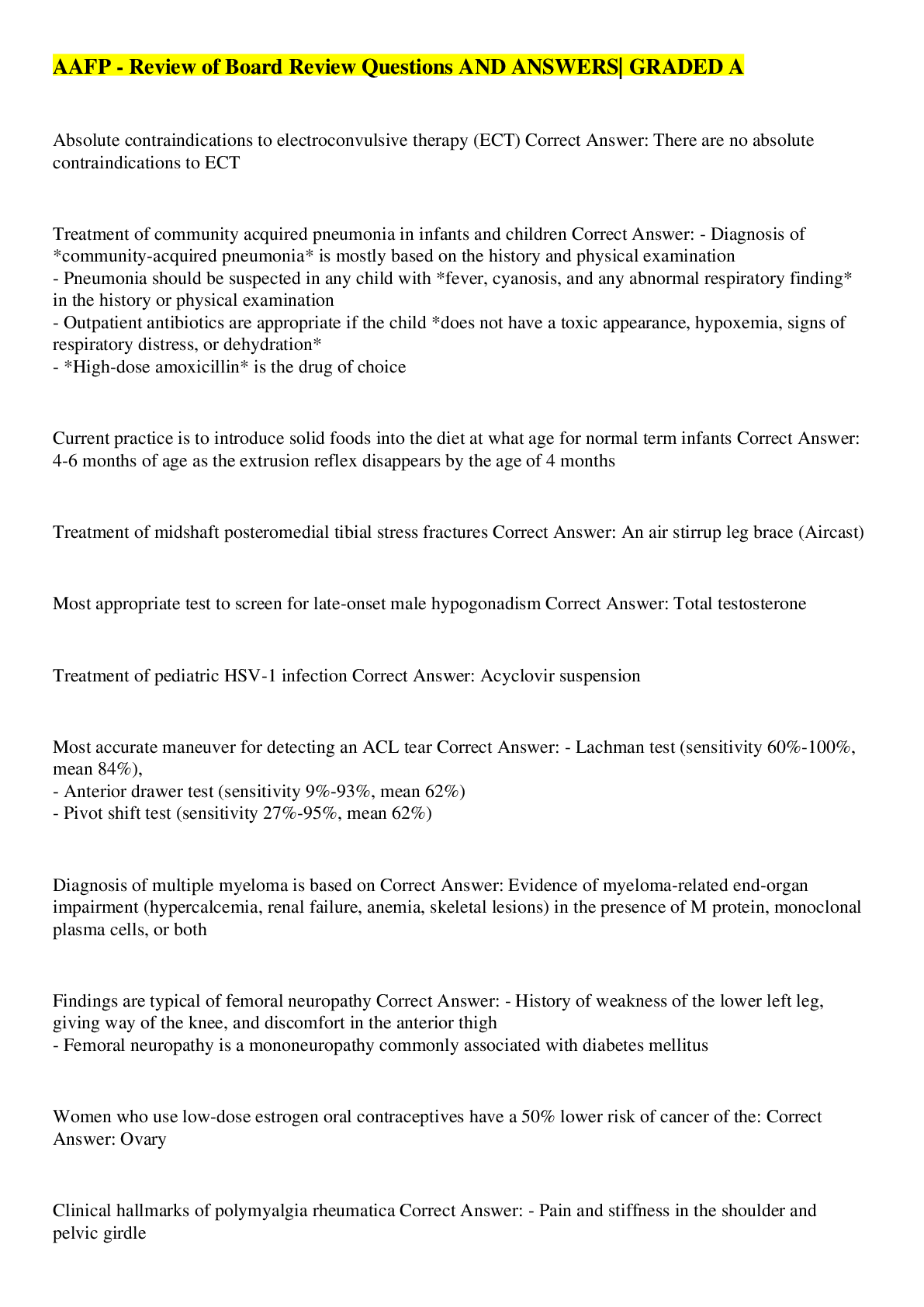
Buy this document to get the full access instantly
Instant Download Access after purchase
Buy NowInstant download
We Accept:

Reviews( 0 )
$12.00
Can't find what you want? Try our AI powered Search
Document information
Connected school, study & course
About the document
Uploaded On
Dec 08, 2022
Number of pages
63
Written in
Additional information
This document has been written for:
Uploaded
Dec 08, 2022
Downloads
0
Views
92



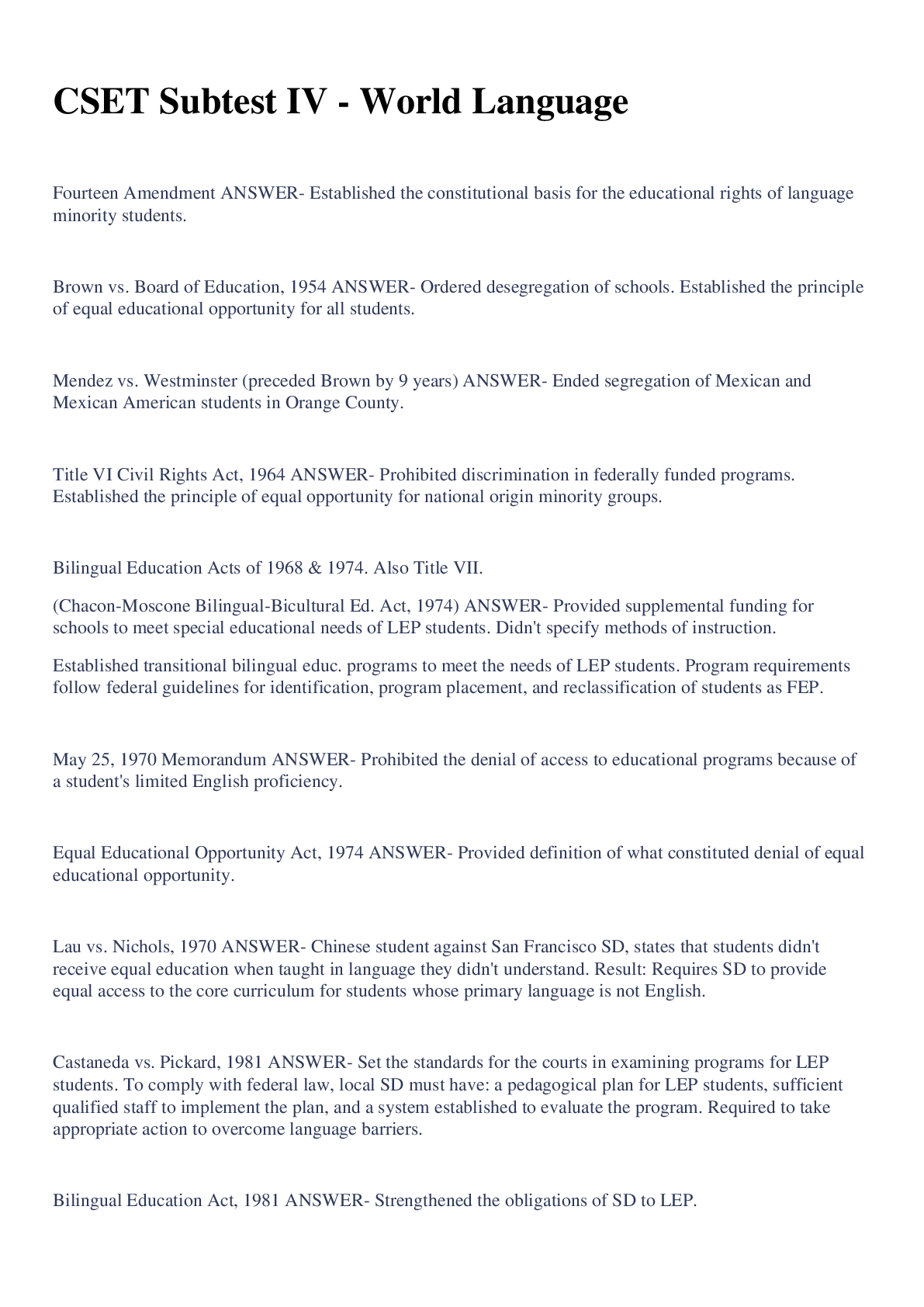
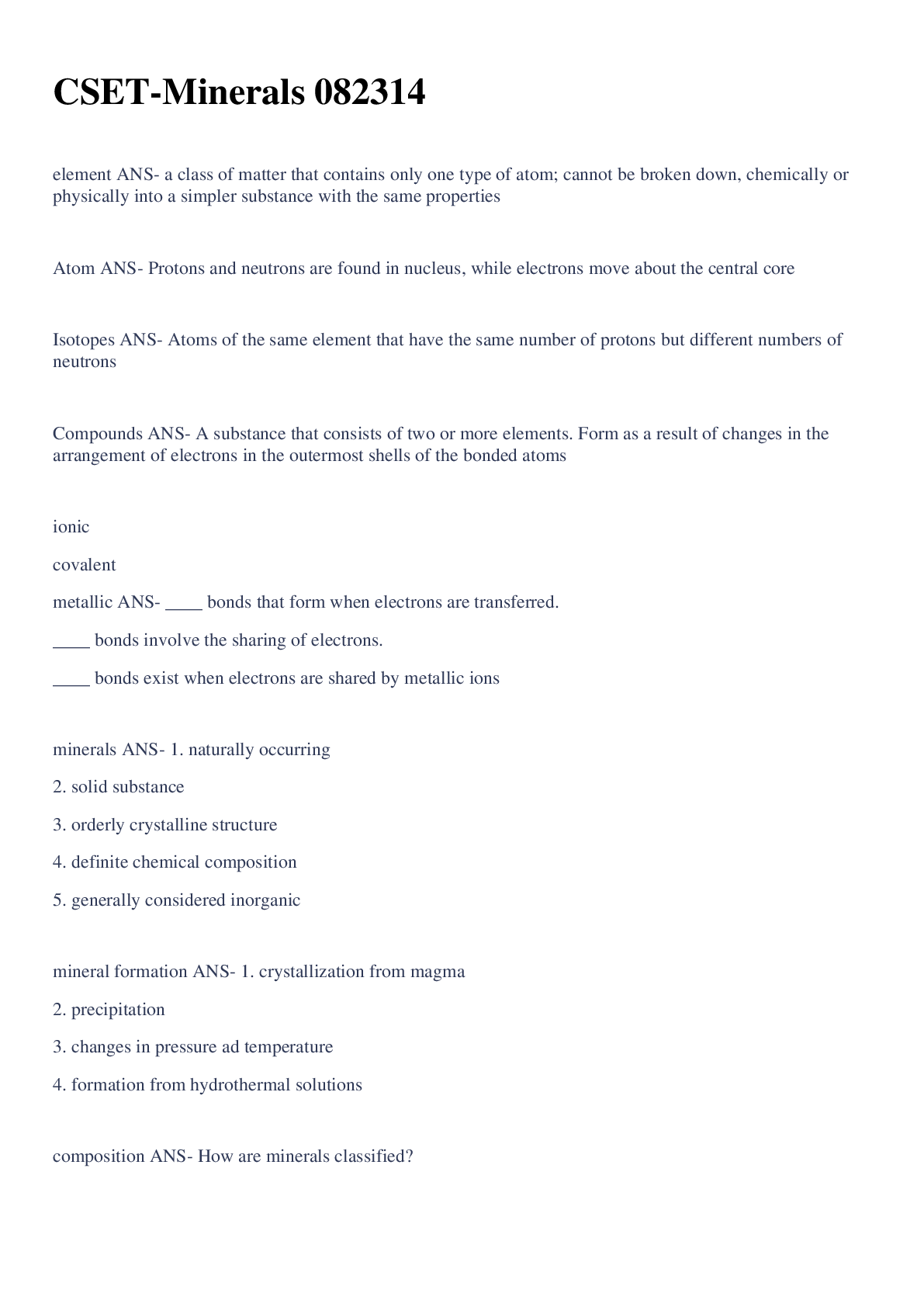
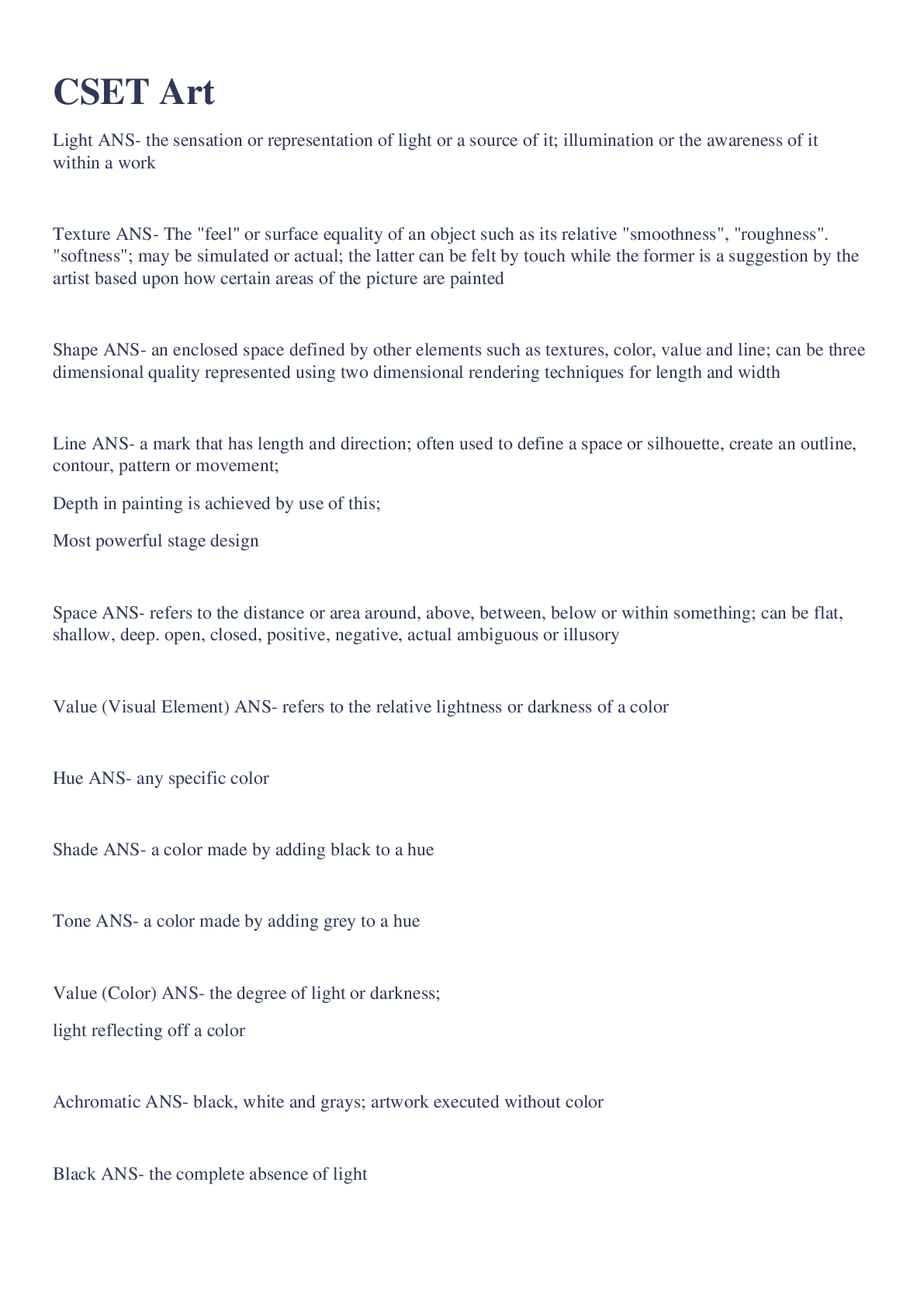
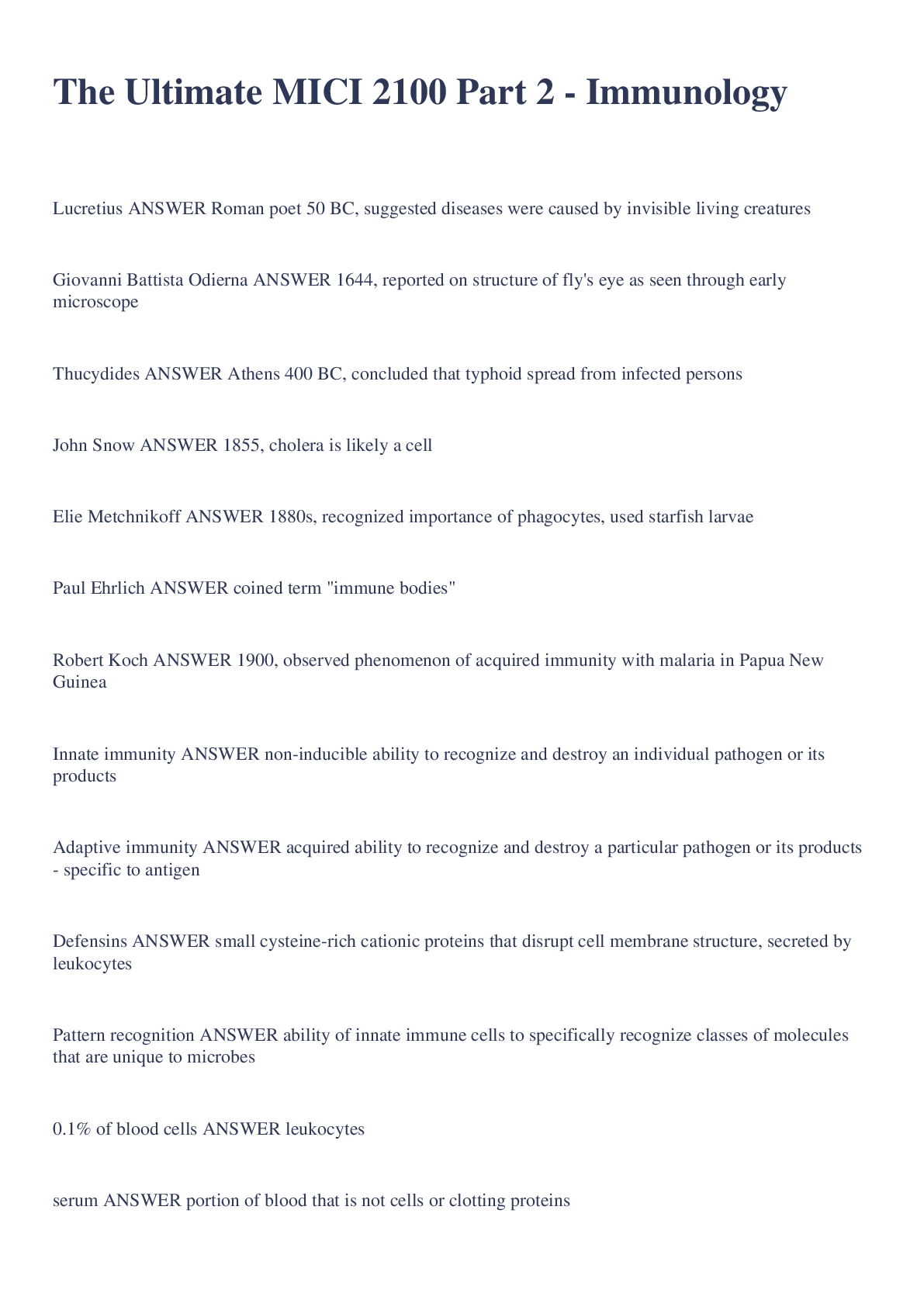
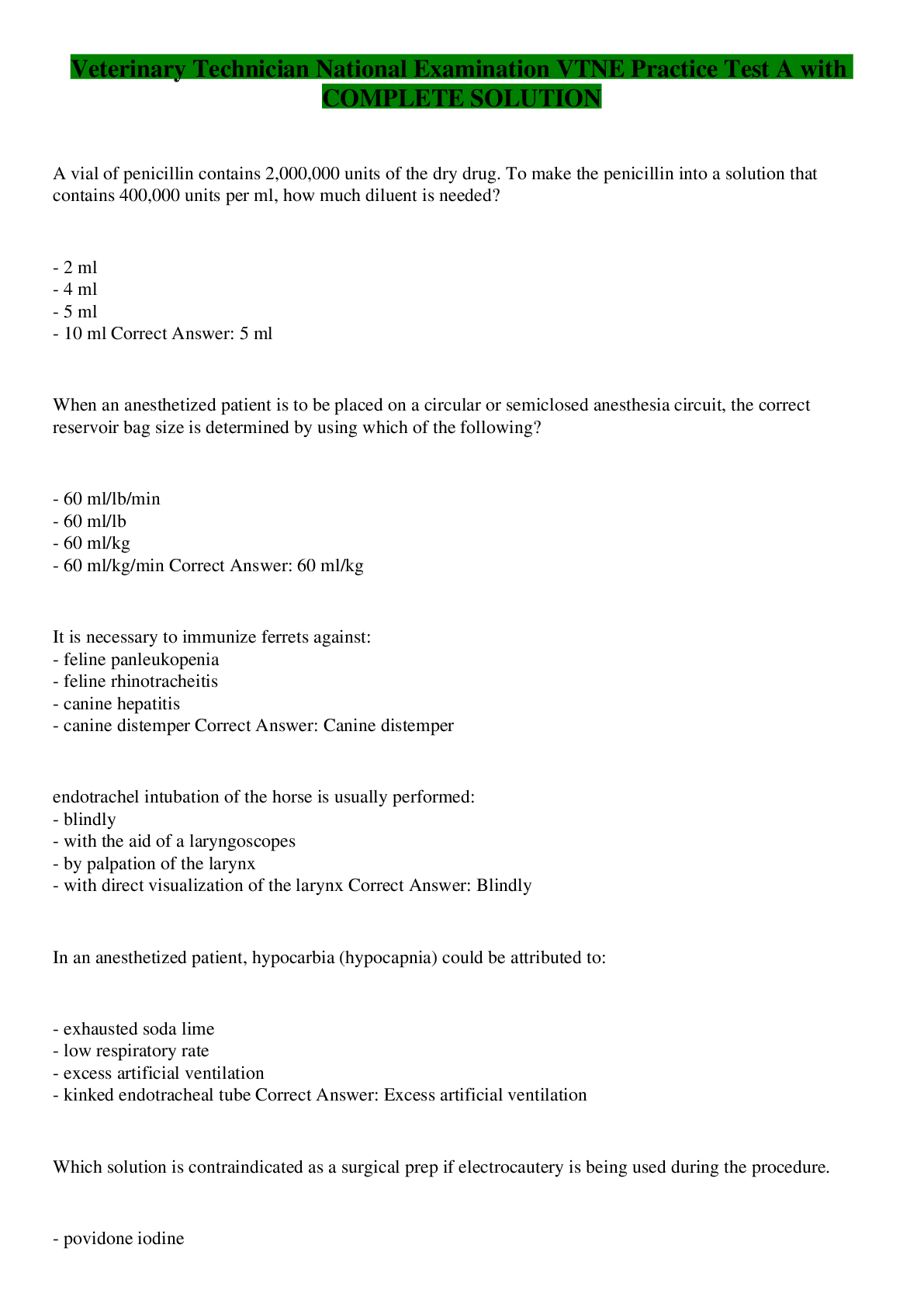



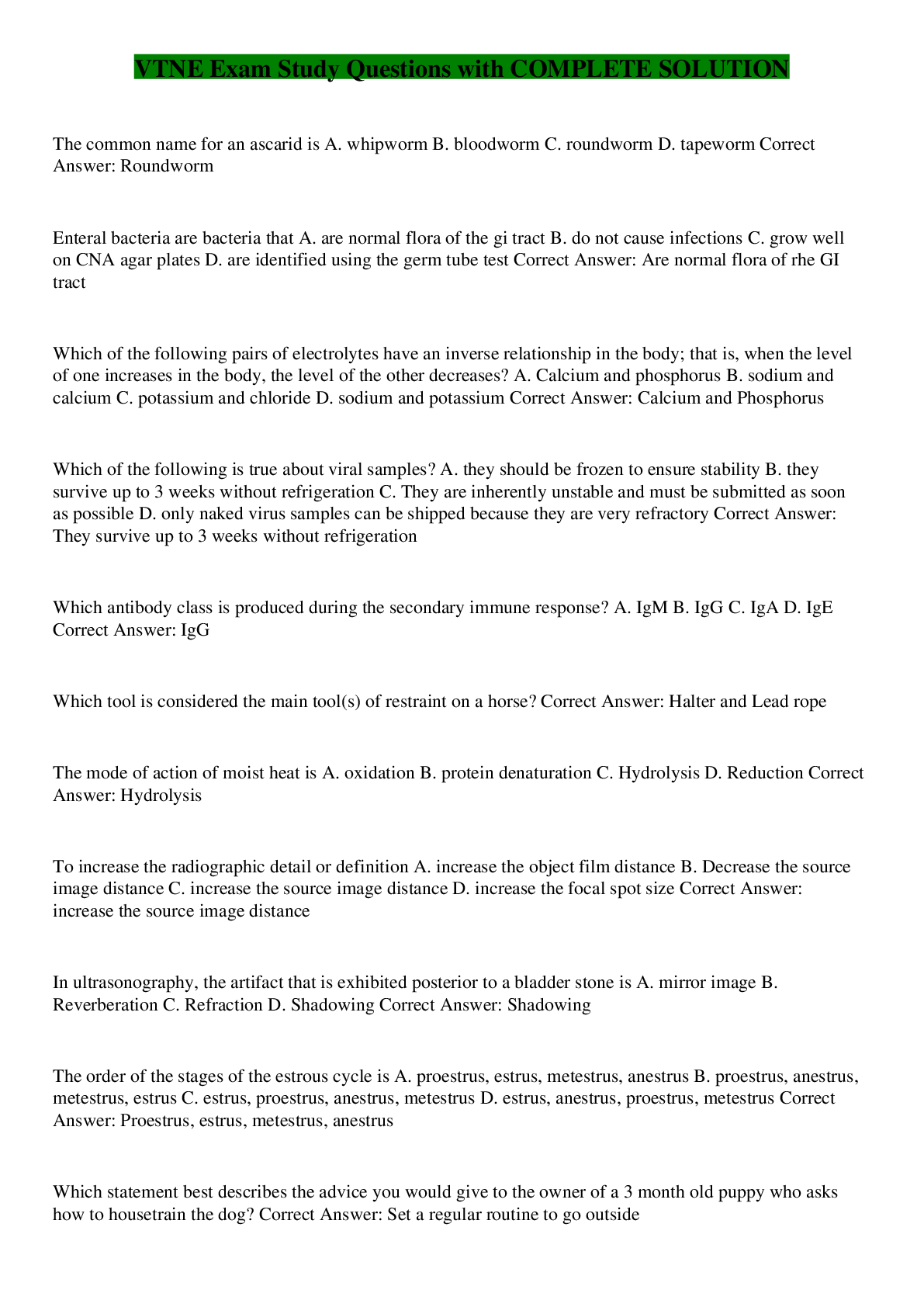




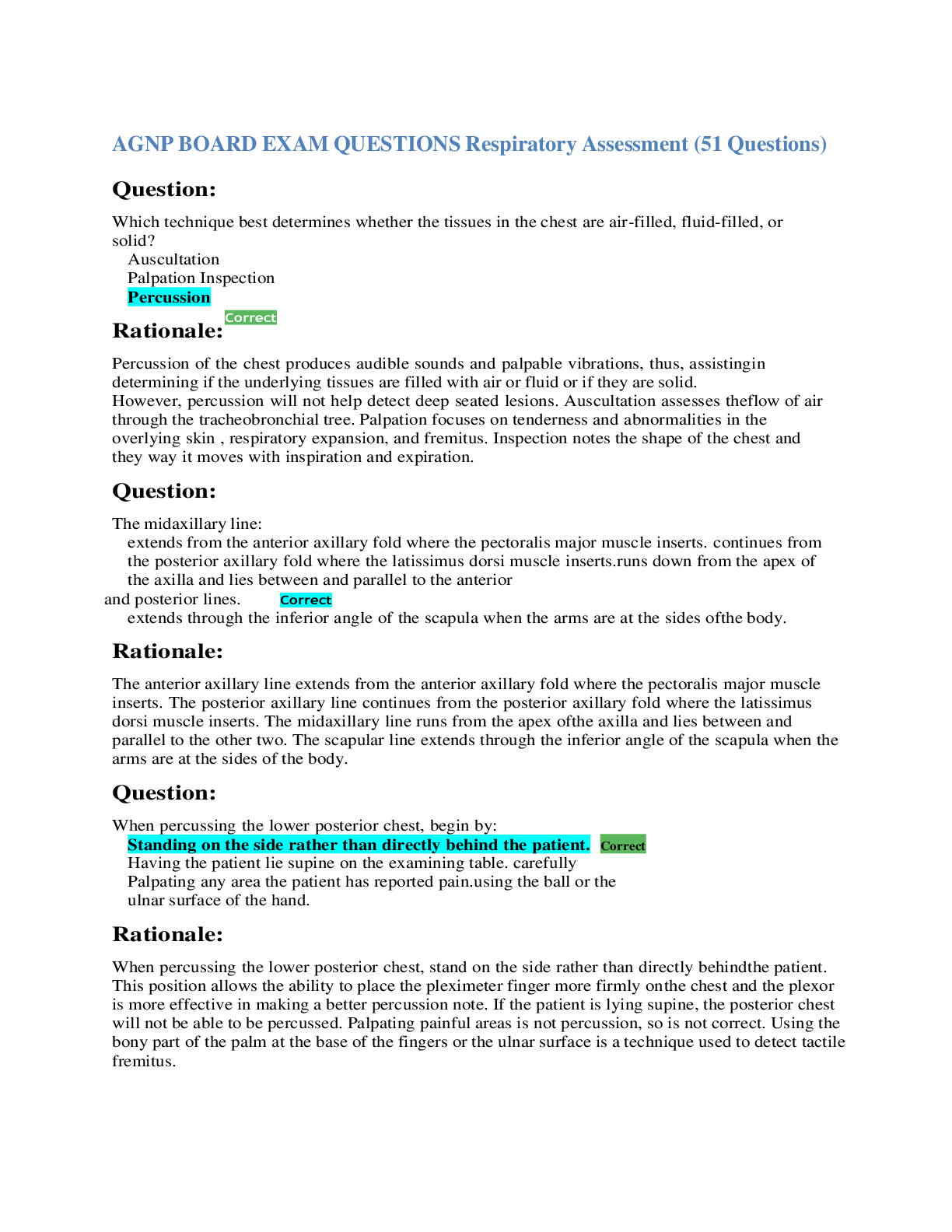





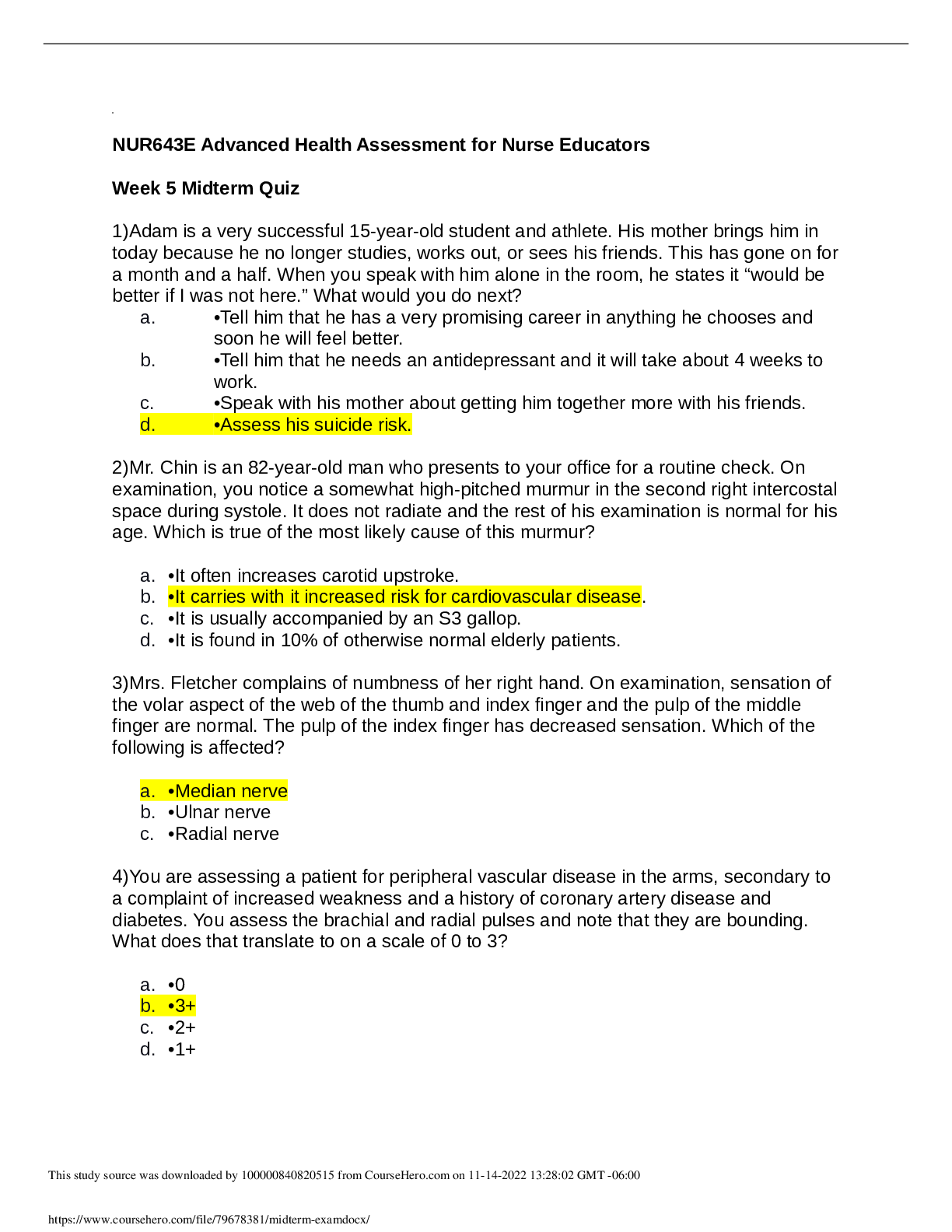

.png)
